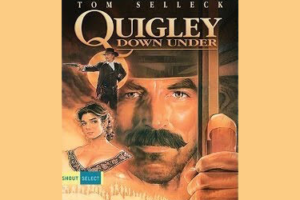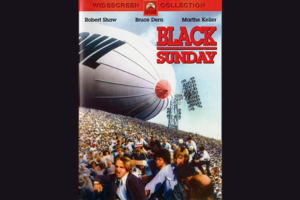



Welcome back to our channel, where we dive deep into the world of classic cinema. Today, we have an exciting topic to discuss as we compare and contrast two remarkable films titled The Dawn Patrol (1930) and The Dawn Patrol (1938). These films, released only eight years apart, share a title but offer distinct experiences for viewers. So, let’s dive right into it!
First, let’s talk about the plots of these two films. Although they share the same title, their stories are different. The 1930 version follows a group of British World War I pilots stationed in France. It delves into their hardships and sacrifices while engaging in aerial combat against the German forces. The film explores themes of camaraderie, duty, and the toll of war on the human spirit.
In contrast, the 1938 version, also set during World War I, focuses on a different group of British pilots in a Royal Flying Corps squadron. While the overall premise is similar, the plot takes a slightly different direction, emphasizing the toll that command decisions and repeated missions take on the pilots’ mental and emotional well-being.
Now, let’s shift our attention to the cast and directors of these films. The 1930 version of “The Dawn Patrol” was directed by Howard Hawks, a renowned filmmaker known for his versatility and mastery of various genres. Hawks is noted for directing Sergeant York (1941), The Outlaw (1943), To Have and Have Not (1944), The Big Sleep (1946), El Dorado (1967), Red River (1948), and Rio Bravo (1959).
The film boasted an impressive cast, including Richard Barthelmess, Douglas Fairbanks Jr., and Neil Hamilton, who delivered compelling performances that captured their characters’ intensity and emotional depth.
Moving on to the 1938 version, it was directed by Edmund Goulding, a talented filmmaker known for his ability to create atmospheric and emotionally charged dramas. Goulding is known for being one of the directors of The World War I aviation film Hell’s Angels (1930) in addition to Grand Hotel (1932), The Razor’s Edge (1946), and Film Noir Nightmare Alley (1947).
The cast of this version included Errol Flynn, David Niven, and Basil Rathbone, among others, who brought their unique charm and acting prowess to the screen, delivering memorable performances that added depth to the characters and their experiences. It could be argued that this was the most extraordinary ensemble that the United Kingdom could field at the time.
It’s worth noting that both films featured exceptional ensembles that brought the narratives to life with their skill and talent. While the cast and directors differed, they each contributed to the distinct flavor and impact of their respective versions of “The Dawn Patrol.”
Let’s shift our focus to the studios behind these films. The Dawn Patrol (1930) was produced by Warner Bros., a powerhouse studio known for its commitment to quality storytelling and memorable films. Warner Bros. was at the forefront of Hollywood’s Golden Age. The studio played a significant role in shaping the landscape of cinema during that era.
The Dawn Patrol (1938), on the other hand, was produced by Warner Bros. competitor, 20th Century Fox. Like Warner Bros., Fox was a major player in the industry, renowned for its production values and ability to captivate audiences with compelling narratives.
Lastly, let’s discuss the importance of these films within the context of cinema history. Both versions of “The Dawn Patrol” hold significance in their own right. The 1930 version is often regarded as a pioneering film in the war aviation genre, setting the stage for future films exploring aerial combat and its impact on individuals.
Meanwhile, the 1938 version, while not a direct remake, stands as a testament to the enduring themes and appeal of the original story. Its exploration of the psychological toll of war and the complexities of leadership adds another layer of depth to the narrative.
These films remind us of the bravery and sacrifices of those who fought in World War I and shed light on the character’s emotional journeys.
In conclusion, while both versions of “The Dawn Patrol” share the same title and World War I setting, they offer distinct experiences for viewers. The 1930 version, directed by Howard Hawks, takes us on a thrilling adventure through aerial combat, while the 1938 version, helmed by Edmund Goulding, delves deeper into the emotional toll of war.
The 1930 version was made more than a decade after The Great War when many felt that war was a thing of the past. On the other hand, when the 1938 version was released, the world was already in the early stages of World War II. In fact, during production, both Niven and Rathbone were called back to active duty but were eventually given permission to finish the film.
The Dawn Patrol (1930) is a little heavy on self-pity. I think The Dawn Patrol (1938) feels more modern and is more enjoyable to watch, although I highly recommend both. The aerial sequences, mostly shot for The Dawn Patrol (1930), but used in both films, are stunning as the paper-thin planes twist and turn. Numerous stunt plans crashed during filming.
We hope this comparison has shed light on the unique qualities of each film and their place in cinema history. As always, we encourage you to explore these classics and appreciate the artistry and storytelling they bring to the screen.
That’s it for today’s video. If you enjoyed this comparison, don’t forget to give it a thumbs up and subscribe to our channel for more exciting discussions on classic cinema. Until next time, keep exploring the rich tapestry of film history. Thank you for watching!










Leave a Reply
Your email is safe with us.